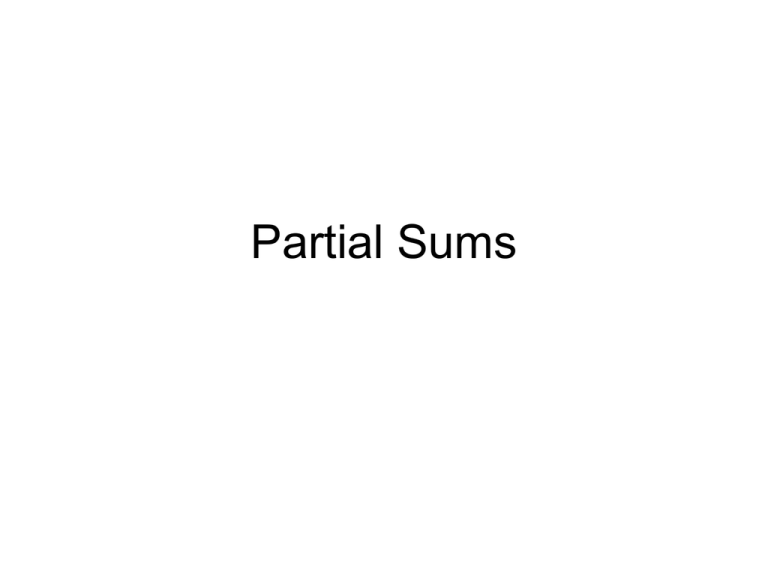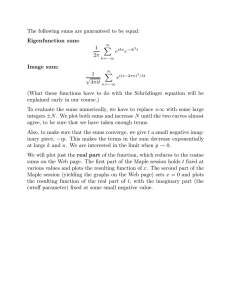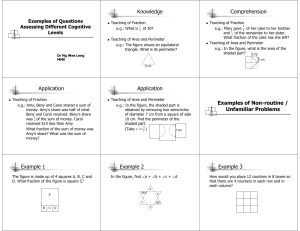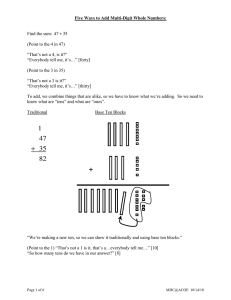Partial Sums Powerpoint
advertisement

Partial Sums • When students begin to learn how to add twodigit numbers they are usually taught “carrying”. • A different way to do this is called the “Partial Sums” algorithm. • Partial sums focuses on place value when solving two-digit addition problems. • It teaches children to start on the left and add the tens first. • Moving from left to right (just like in reading!) actually makes sense to the children and they have a better understanding of why and how they get their answer. • Here is an example of the Partial Sums Algorithm: 45 +38 7 0 Step 1: Add the tens (40 + 30 = 70) and write the sum. + 1 3 Step 2: Add the ones (8 + 5 = 13) and write the sum. 8 3 Step 3: Add the tens and ones (70 + 13 = 83) to get the final answer. • Here is another example of the Partial Sums Algorithm: 67 +4 5 100 Step 1: Add the tens (60 + 40 = 100) and write the sum. +1 2 Step 2: Add the ones (7 + 5 = 12) and write the sum. 112 Step 3: Add the tens and ones (100 + 12 = 112) to get the final answer. • http://www.youtube.com/watch?v=4UexB Oa7u8Y











